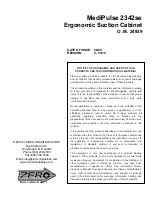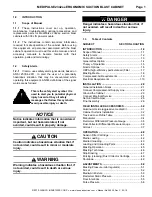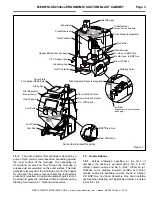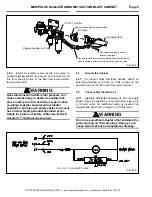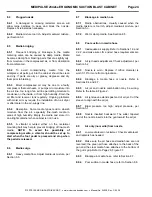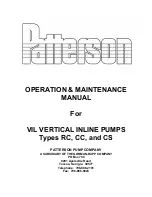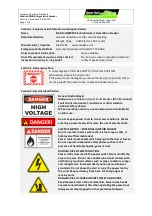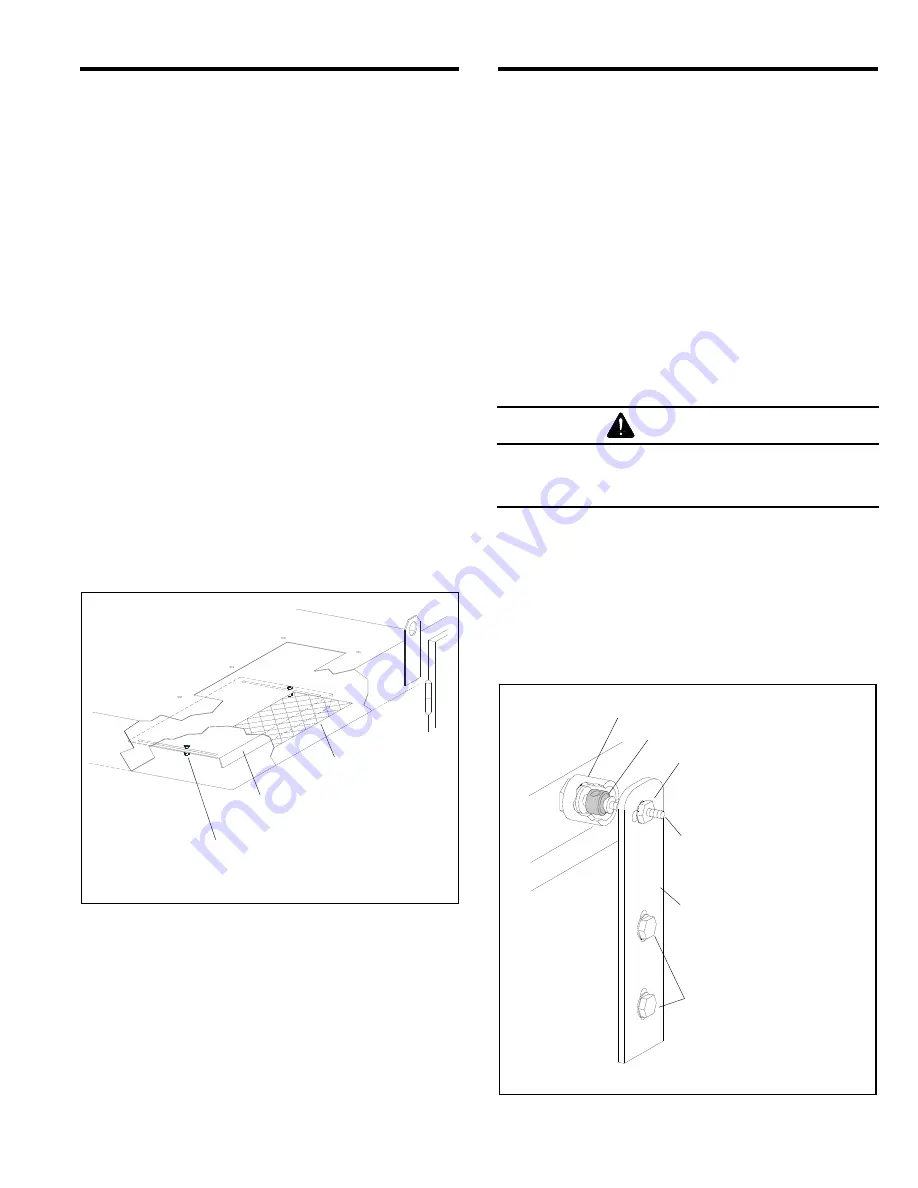
MEDIPULSE 2342se ERGONOMIC SUCTION BLAST CABINET
Page 13
© 2019
CLEMCO INDUSTRIES CORP.
www.clemcoindustries.com
Manual No. 24939, Rev. C, 03/19
(counterclockwise when viewed from the top) until the
media flows smoothly. Tighten the lock nut finger-tight to
maintain the setting.
5.3.4
If media flow is too light, decrease air in the
mixture by turning the metering screw in (clockwise
when viewed from the top) covering more of the holes so
less air enters the media hose. Tighten the lock nut
finger-tight to maintain the setting.
5.4
Reclaimer Static Pressure
5.4.1
Correct static pressure varies with the size,
weight, and type of media.
5.4.2
Adjust static pressure by opening or closing the
outlet damper located above the reclaimer on the
underside of the underside of the power module top, as
shown in Figure 17. If the damper is not opened far
enough, the reclaimer will not remove fines, resulting in
dusty media and poor visibility, or will not convey media,
causing media buildup in the hose between the cabinet
hopper and reclaimer. If the damper is opened too far, it
may cause carry over (usable media carried into the dust
collector) and result in excessive media consumption.
Open only as far as necessary to obtain a balance of
maximum dust removal without media carry over.
Figure 17
5.4.3
A manometer is useful for adjusting and
monitoring static pressure. The manometer kit is listed in
Section 9.1: Optional Accessories
. Refer to Section 5.8
for manometer operations. The following are static-
pressure starting points for given media. Static pressure
may need to be lower with finer media, higher with
coarser media. Run the media through several blast
cycles, allowing the reclaimer to function with these
settings. Inspect media in the reclaimer and fines in the
dust collector, as noted in Paragraph 5.4.2. Continue
adjusting static pressure until optimum media cleaning
without carry over is attained.
Glass Bead No. 6 and 7 ................................. 3-1/2" – 4"
Glass Bead No. 8 to 12 .................................. 3" – 3-1/2"
Aluminum Oxide 60-Mesh to 80-Mesh .................. 4" – 5"
Aluminum Oxide 80-Mesh to 180-Mesh ................ 3" – 4"
5.4.4
As dust accumulates on the outer surface of the
cartridge, static pressure drops, requiring additional
pulsing of the cartridge as described in Section 6.2.4, or
an increase in pulse pressure, per Section 5.6. When
pulsing no longer maintains the necessary static
pressure, readjust the damper.
5.5
Door Interlocks ‒ Figure 18
WARNING
Never bypass the door interlock system. Doing
so can result in serious injury from unexpected
blasting.
5.5.1
The door interlocks disable the blasting control
circuit when doors are open. To enable blasting, the
door-interlock switches must be engaged when doors
are closed. The interlocks are set at the factory and do
not normally require field adjustment unless parts are
replaced. If adjustment is required, proceed as follows.
5.5.2
Close cabinet doors.
Figure 18
To adjust opening, loosen nuts
and slide damper. Tighten nuts
to maintain the setting.
Outlet Damper
Screen
Cabinet Door
Detent Sleeve
Over-Travel Stop
Loosen nut and move adjusting
screw sideways to center the
screw on the over-travel stop.
Adjusting Screw Nut
Loosen the bracket screws and
move the bracket up or down to
center the adjusting screw on the
over-travel stop.
Actuator Adjusting Bracket
Bracket Screws
Adjust the screw to push the
valve stem (over-travel stop)
in when door is closed.
Adjusting Screw

